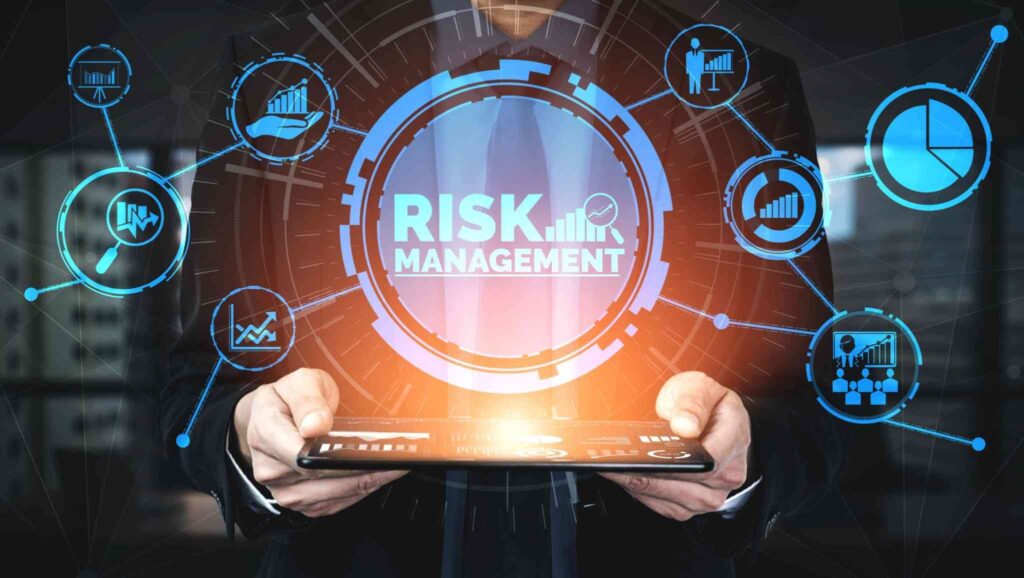How To Conduct A Technology Investment Risk Analysis?
It is recommended that any investor apply risk analysis strategies before starting an investment project. Technology investment risk analysis is one of the basic strategies that help investors, especially in the technology sector, maintain their financial stability even during market fluctuations.
Technology investment risk analysis is an essential process for investors to have profitable investment portfolios in the technology sector.
Technology investment risk analysis process in technology investments may include the following steps:
- Determining financial targets
- Examining local and current market conditions
- Anticipating potential threats
- Financial risks
- Examining regulators
Thanks to these steps, it is possible to manage investment projects in the technology sector, where conditions are constantly changing and competition is high, without affecting financial profitability.
Especially thanks to supporting solutions such as data analytics and artificial intelligence solutions, the return potential of any investment project can be determined in advance and possible market threats can be predicted.
Today, many successful technology investors manage their investment projects with a long-term perspective rather than a short-term one. In this process, they often benefit from data analytics and artificial intelligence tools.
What Is Technology Investment Risk Analysis?

Technology investment risk analysis is the process of analyzing financial and operational risks during the period when a new or innovative technological product or service is evaluated in an investment project.
Thanks to this analysis, investors can maintain their financial stability by managing projects that can be profitable for them within the rapidly changing conditions of the technology sector.
Technology investment risk analysis generally includes market dynamics, competitive analysis, and other common financial modeling. Thanks to these tools, investors can also evaluate the financial profitability of the product or service they are interested in during this analysis process.
If I need to give an example on this subject for today’s markets, I should definitely mention the field of artificial intelligence technologies and machine learning. The probability of investments in this field being profitable shortly is quite high.
These technologies, which are becoming increasingly popular every day, will turn into profitable projects for traders who invest today.
Key Factors In Technology Investment Risk Analysis
We can suggest that individuals or businesses with investment projects in a relatively difficult sector such as technology should consider some basic factors during the technology investment risk analysis process.
The basic factors that you should never neglect before starting an investment project in such a period can be listed as follows:
- Financial Stability
- Technical Feasibility
- Market Growth Potential
- Current status of regulations
- Competition analysis
- Cybersecurity threats
- Data Studies Examining Customer Demands
Separate time and energy should be allocated to each of these factors. Technology sector participants should evaluate each of these factors before starting investment projects in such a risky market.
In order for the financial stability factor not to be a problem, investors can discover the projects of teams that have been consistently successful for many years within the current market conditions.
Market growth potential is also one of the basic factors in the technology investment risk analysis. Today, innovative technologies such as digital banking solutions and artificial intelligence tools have market growth potential.
Because the popularity of these areas is increasing and the solutions they offer are increasing. It is easy to predict that artificial intelligence technologies will be the right investment model in terms of market growth potential for the future.
How To Conduct An Effective Technology Investment Risk Analysis?
One of the basic requirements for technology investors to manage technology investment risk analysis in the most efficient and effective way is market research. The market research process includes observing the dynamics and conditions related to the market, including competitive analysis.
With SWOT analysis, which is one of the most common types of analysis, you can determine the positive and negative aspects of a technology investment project. At the same time, the return potential and risk potential offered by the project are simulated in the SWOT analysis.
In this process, investors can create short- and long-term projections about the future. More realistic scenarios can be tested thanks to the risk simulation tools in the market. In this way, resilience is increased in the fluctuations that frequently occur in the technology sector.
Common Risks Identified In Technology Investment Risk Analysis
As with investments in every field, technology is a market with risks. It is recommended that investors consider these risks through a technology investment risk analysis process before starting their projects. The most common technology investment risks can be listed as follows:
- Financial uncertainties
- Rapidly changing market conditions and difficulty adapting to new solutions
- Lack of regulatory updates
- Highly competitive environment
- Cybersecurity threats
Although these risks are risks that professional investors may encounter in almost every investment model, their impact may be higher in the technology sector. Because this area is a market where radical or revolutionary changes occur almost every day compared to other investment models.
Identifying these risks in advance and being more resilient depends on how successful technology investors are in the technology investment risk analysis process.
For example, before investing in a mobile application developed for use on smartphones, it may be necessary to predict how necessary the solution offered by this application will be in the medium term.
How Do Market Trends Influence Technology Investment Risk Analysis?
Investors are directly affected by trends and tendencies in the market. However, the effects in the technology sector can be much more obvious and rapid. Because market trends can change every year.
While artificial intelligence technologies and tools were an innovation that we only saw in movies 3-4 years ago, today they have become a widespread trend technology that we encounter in applications installed on almost every smartphone.
In addition to these, market trends are factors that must be followed by participants in the technology sector, as they change customer demands, cause problems such as incompatibility with regulations, and cause economic fluctuations.
The Role Of AI In Technology Investment Risk Analysis
Resources and information that were previously only accessible to large companies can now be accessed by smaller investors, including angel investors. One of the biggest obstacles for venture capitalists and angel investors is finding interesting investment targets before anyone else.
However, predictive analytics such as machine learning and artificial intelligence tools are starting to transform this process.
The increasing adoption of artificial intelligence in areas such as decision-making, analysis, strategy development, and risk management in the business world and the increase of its share in decision-making mechanisms will be a process we will experience shortly.
The possibility of artificial intelligence producing incorrect or biased results and the possibility of data privacy violations can cause undesirable consequences or damages for companies.
The importance of basic regulatory elements such as being transparent, accountable, and ethical within the framework of the obligations of publicly traded companies and the responsibility assumed necessitates that artificial intelligence applications to be used within the scope of investor relations activities also comply with the law and ethical standards.
How To Mitigate Risks In Technology Investment Risk Analysis?
Due to the uncertainty of the future, investments that will provide returns in the long term also involve risk.
When making future estimates in investment projects, risk analyses should be conducted, projects with maximum return and minimum risk should be selected, and risk limits should be determined according to possible deviations in estimates.
Otherwise, a wrong choice will not only result in the waste of economic resources but also cause the company to lose its advantages over its competitors.
Today, fixed investment projects can be carried out simultaneously by all competitors at the same level, volume, and capacity.
However, what is important in competitive conditions is not which company will make fixed investment projects faster and quicker or which company will make larger and more capacious investments, but the return-generating activities after the investment is made, in other words, the return on the project in an environment of uncertainty.
This is possible with technology investment risk analysis and measurement in investment projects.
In this process dominated by uncertainty, companies will also want to avoid high additional costs for technology investment risk analysis and will only prefer objective methods that support subjective methods.
In this context, companies will prefer minimum-cost methods in the technology investment risk analysis and assessment process and avoid methods that will bring additional burdens in terms of labor, time, and money.
As a result, companies’ ability to survive in this competitive business world depends on analyzing and managing their risks, and first of all, on employees being equipped with the knowledge to implement such systems.
Because managing risk is possible with reliable and accurate information. Accurate and reliable information can be provided by using the right and necessary methods.
Case Studies Of Technology Investment Risk Analysis In Action
The second stage of portfolio management is technology investment risk analysis. Investment analysis is the examination and measurement of the qualities of the securities to be included in the portfolio, and the quantitative estimation of what the performances of different securities may be in a certain period of time.
In technology investment risk analysis, the important thing is not only the examination and evaluation of the past performances of the financial assets that can be invested. In addition, it is necessary to make forward-looking mathematical predictions by using various information.
With such calculations, it can be revealed whether the international or national economic, social, and political conditions are suitable for investment.
As for the economic situation, the government’s monetary and fiscal policies, inflation, interest rates, economic and sectoral growth rates, gross national product, balance of payments and international developments should be taken into consideration.
If the economic, social, and political situation is suitable for investment, then analyses should be made on which industries will have a better future. In order to analyze which industries can create better return opportunities in the future, it will be necessary to look at the profitability of the sector, growth rate, market size, competition conditions, and legal practices.
By determining the position of the sector in line with the variables in question and having information about its future outlook, it is possible to make investments by comparing the sector with other sectors.
Best Practices For Technology Investment Risk Analysis

Current conditions and historical financial health and growth potential of technology companies are essential factors in technology investment risk analysis.
Investors’ attitudes toward risk vary. According to this difference, some investors take excessive risks, while others avoid risk or remain indifferent to risk.
Investors’ attitudes toward risk affect their portfolio preferences. While investors who want to take risks prefer risky assets such as stocks and derivatives, investors who avoid risk prefer low-risk investment instruments such as bonds.
For investors to achieve these goals, the selection of securities to be included in the portfolio and the determination of investment amounts constitute an important element.
In addition, the returns and risks of the portfolios should be measured and it should be determined whether the expectations regarding the portfolio are met.
Since portfolios consisting of securities contain risks, the portfolio management process should be carried out professionally with a scientific method.
The Future Of Technology Investment Risk Analysis
Although the future will be very colorful for the technology sector, it still includes risks such as uncertainty. The dictionary meaning of risk is the possibility of an unexpected situation occurring in the future, the chance of injury, hurt, and damage.
It is seen that the concepts of risk and uncertainty are used synonymously in daily life. Situations referred to as risk are situations where the probabilities of alternative outcomes of future events occurring are known.
In the case of uncertainty, there is no information about the distribution of the probability of the future event occurring among the alternatives.
While uncertainty situations cover subjective probabilities, riskiness indicates objective probabilities regarding the occurrence of the event. Financially, risk is the probability that the expected return will deviate from the actual return.
There is a possibility that the return that the investor will obtain from the investment he has made will fall below or exceed the expected return. This probability constitutes the risk of the investment he has made for the investor. In other words, the existence of risk means that more than one outcome is possible.
See you in the next post,
Anil UZUN

